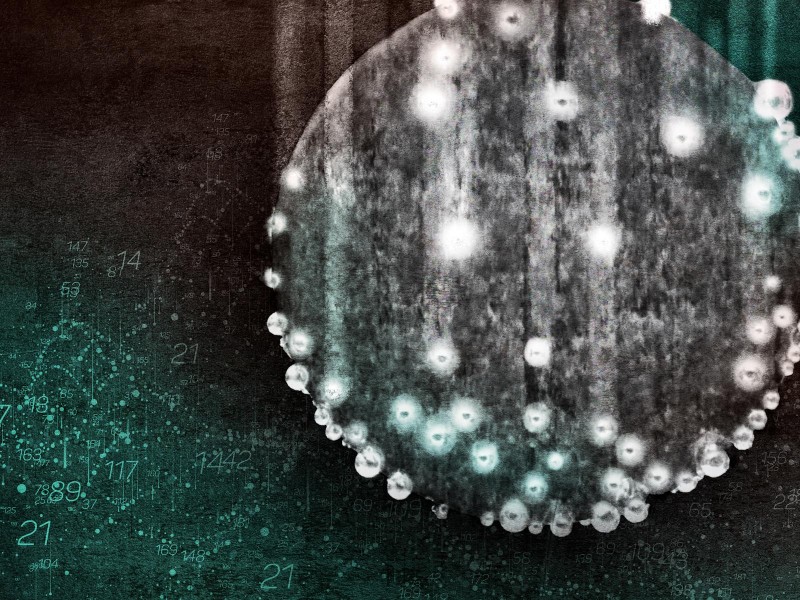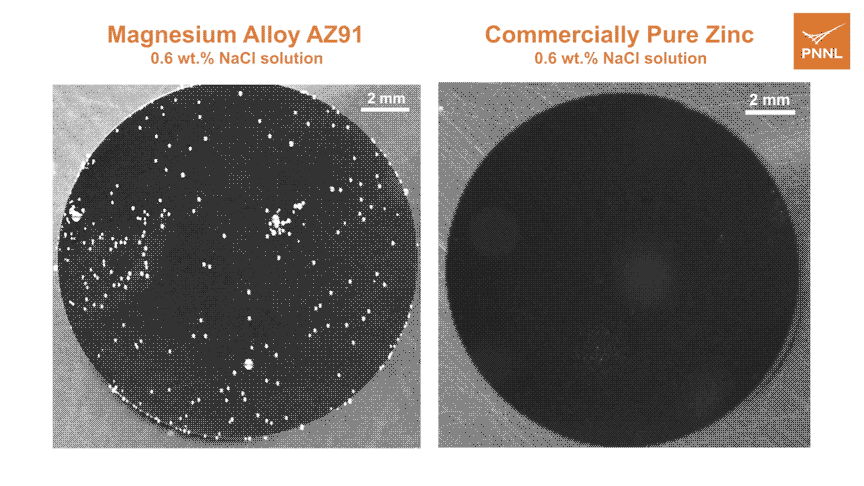[ad_1]
Mar 21, 2024
(Nanowerk Information) Researchers are utilizing new, experimental methods like Shear Assisted Processing and Extrusion (ShAPE™) and friction stir welding to supply steel parts which might be lighter, stronger, and extra exact than ever earlier than. However as we enter these new frontiers of metalworking, it’s essential to know the efficiency and properties of the ensuing metals and the bonds between them. Corrosion—a course of by which metals degrade—can pose severe issues over time, however till now, it’s been difficult to visualise and clarify precisely how corrosion progresses by means of a steel or a bond between two metals.
Now, researchers at Pacific Northwest Nationwide Laboratory (PNNL) have developed a brand new approach to get a high-resolution have a look at how – and why – corrosion occurs.
This analysis was highlighted within the August 2023 (“Investigating electrochemical corrosion at Mg alloy-steel joint interface utilizing scanning electrochemical cell impedance microscopy (SECCIM)”) and October 2023 (“Probing corrosion utilizing a easy and versatile in situ multimodal corrosion measurement system”) problems with Scientific Reviews and within the July 2022 subject of The Journal of Bodily Chemistry (“Understanding Localized Corrosion on Metallic Surfaces Utilizing Scanning Electrochemical Cell Impedance Microscopy (SECCIM)”).

PNNL’s new technique of monitoring corrosion gives greater decision and higher reliability. (Picture: Melanie Hess-Robinson, PNNL)
The issue with “cook-and-look” and different strategies
“One of many essential challenges relating to measuring corrosion is that it’s principally ‘cook-and-look,’” defined Vineet Joshi, a supplies scientist at PNNL. “Usually, researchers take a pattern, immerse it of their chosen medium and, after a sure time frame, observe the corrosion—however solely after it has occurred. Then, they generate quite a few hypotheses to clarify the corrosion.”
This technique has main disadvantages. Solely measuring at just a few time intervals leaves researchers to invest about how the corrosion started and moved by means of the steel—and repeatedly eradicating and reinserting the pattern can result in skewed outcomes.
Different strategies, such because the scanning vibratory electrode approach or scanning electrochemical cell microscopy, contain dipping the pattern after which utilizing present to measure the electrochemical properties contained in the samples—however floor abnormalities and different irregularities can intervene with the outcomes.
Multimodal corrosion evaluation
At PNNL, the researchers working to know outcomes from processes like friction stir welding and ShAPE knew they wanted to develop a greater method to monitoring corrosion.
“We particularly needed to transition from cook-and-look and as an alternative have a look at particular initiation websites of corrosion to look at the corrosion in actual time,” Joshi stated. “To deal with this, we created a novel macroscale evaluation system referred to as multimodal corrosion evaluation.”
By means of multimodal corrosion evaluation, the researchers use sensors, cameras, electrodes, and a hydrogen assortment tube to look at the progress of corrosion in easy atmospheres; perceive the character of the surfaces utilizing electrochemical methods; and picture and accumulate hydrogen gases, that are a byproduct of corrosion.
“By combining information from these easy and various modalities in actual time, we are able to tackle elementary questions concerning how corrosion initiates and propagates in supplies,” defined Sridhar Niverty, a supplies scientist at PNNL. “The correlative imaging side additionally informs us about the place to additional examine our supplies to find out about why they corrode. The synergistic mixture of those methods yields considerably extra details about a fabric’s efficiency than was potential till now.”
Taking a look at issues from macroscale perspective supplied the crew with distinctive insights; nonetheless, the method of corrosion occurs at a a lot finer scale.

Examples of how scanning electrochemical cell impedance microscopy can visualize corrosion with exacting element over time. (Picture: Sara Levine, PNNL)
Scanning electrochemical cell impedance microscopy
So, to research corrosion with much more precision, scientists at PNNL developed a brand new approach referred to as scanning electrochemical cell impedance microscopy that provides way more dependable and high-resolution outcomes.
“On this approach, we’ve every little thing wanted to provoke the corrosion in a really small tube—or pulled capillary—together with the electrolyte, reference, and current-collecting electrode,” stated Venkateshkumar Prabhakaran, a chemical engineer at PNNL. “By touchdown the tiny opening of this capillary on the floor, we measure localized and time-dependent electrochemical properties with out getting any interference from close by areas. That helps us seize weak and powerful spots on the floor susceptible to corrosion, that are in any other case misplaced when doing the bulk-scale measurement and formulate-suitable mitigation methods.”
This new method builds on a previous approach referred to as scanning electrochemical cell microscopy that emerged just a few years in the past. The PNNL crew advanced that approach with electrochemical impedance spectroscopy to measure low-frequency impedance, which correlates to the resistance of the steel and permits for a microscopic view of how resistance modifications over time.
“Including impedance spectroscopy to the approach has been invaluable in understanding how a floor modifications throughout steel joint (or alloy) by correlating resistances measured to the bodily traits of the steel,” stated Lyndi Unusual, a chemist at PNNL. “We now have validated our technique by evaluating bulk impedance responses to responses measured through the brand new approach, which reveals how we are able to now isolate particular corrosion occasions on the floor.”
Functions for friction stir and extra
There are plenty of real-world advantages to this sort of granularity—notably at PNNL, the place researchers are working exhausting to supply and check light-weight supplies and joints for automobile purposes utilizing novel strategies like ShAPE and friction stir welding.
“On account of its distinctive capabilities, the brand new approach is being employed to accumulate electrochemical responses from varied microstructural options: grains, grain boundaries, interfaces, second phases, precipitates, and so forth,” defined Rajib Kalsar, a supplies scientist at PNNL. “Acquiring particular person electrochemical properties on the microscopic stage is helpful for designing excessive corrosion-resistant structural supplies.”
Within the friction stir scribe course of, as an example, a tiny reducing system is used to hitch supplies with drastically totally different melting factors with out the necessity for fasteners. However researchers wanted to know how this new technique of becoming a member of affected corrosion on the interface between the 2 metals—in a single case, a friction stir scribe bond between magnesium and metal, which is an important bond for producing light-weight autos.
“When using the friction stir scribe approach for joints, we noticed a barely decrease corrosion charge,” Joshi stated. “The decline in corrosion charges will be attributed to the emergence of particular high-resistance pathways on the interface throughout processing. These pathways led to a discount within the corrosion charge of the magnesium.”
“We’re utilizing our new approach left and proper now,” he added. “Should you perceive these interfaces for corrosion rather well, you can begin to design precisely, moderately than overdesigning or underdesigning a element.”
[ad_2]
Supply hyperlink




